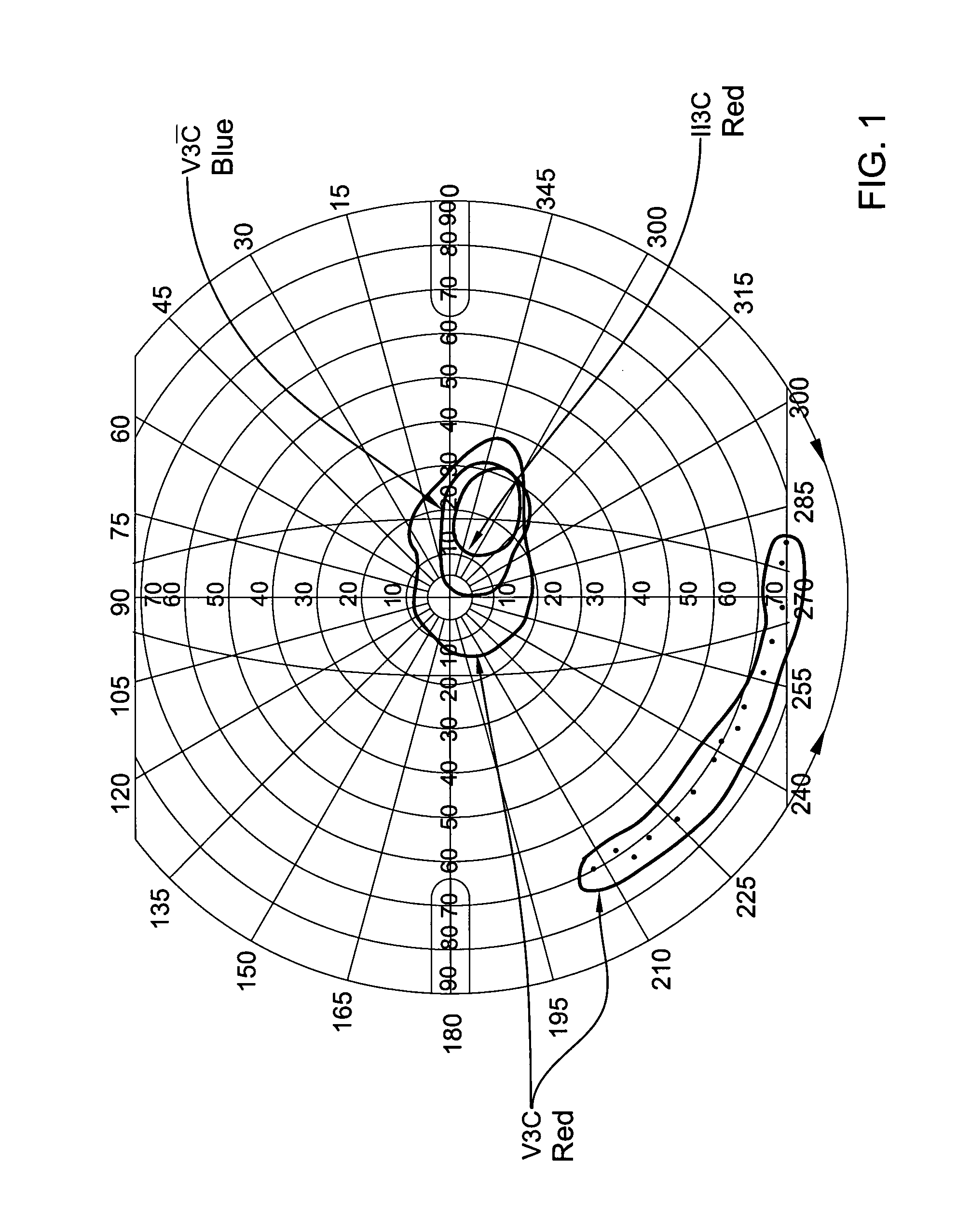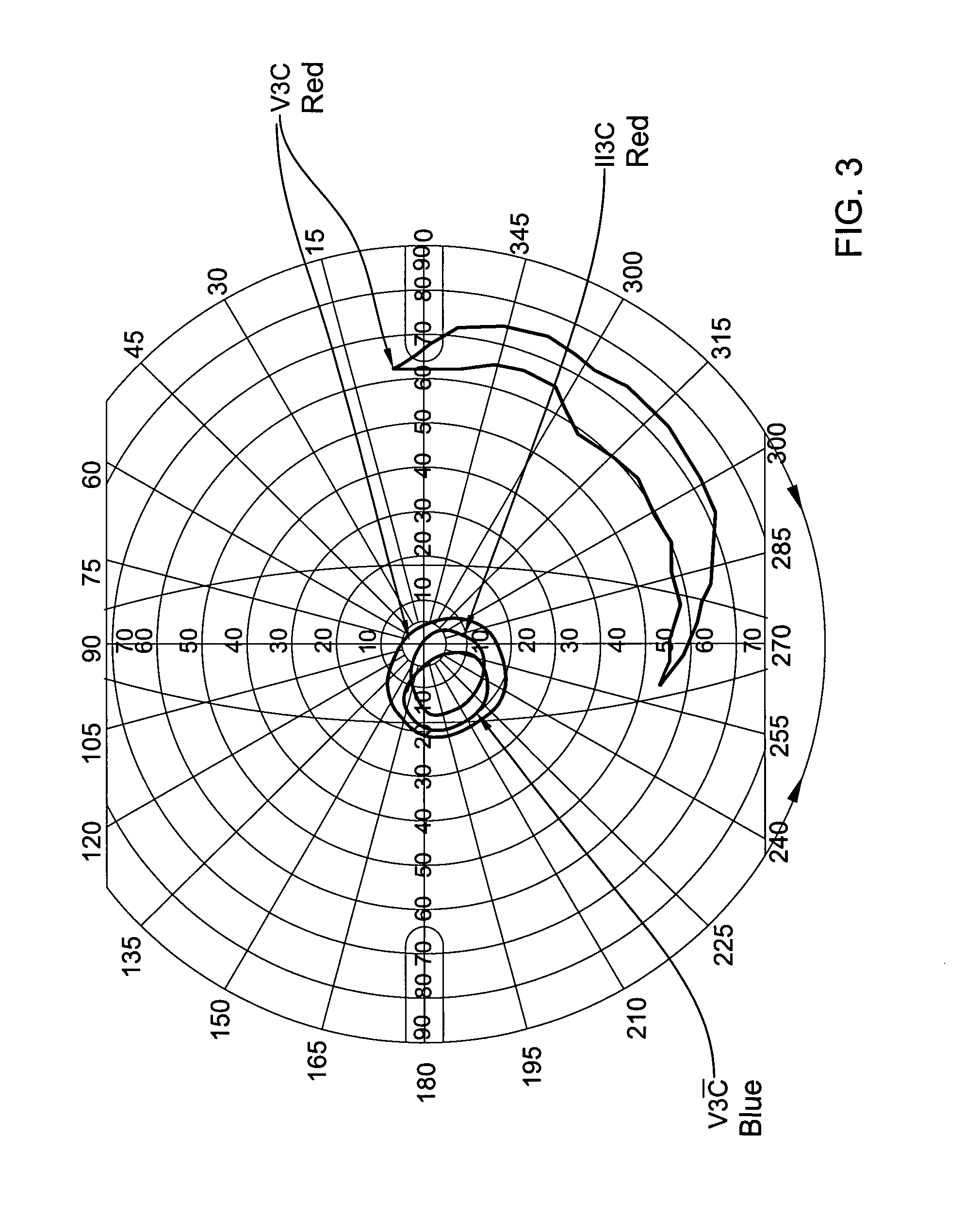Methods of treating ophthalmic disorders
a technology for ophthalmic disorders and eye disorders, applied in the field of eye disorders, can solve the problems of total blindness, increased severe visual loss, and loss of central (day) vision, and achieve the effect of improving day [photopic] vision and/or cone-derived visual field and visual functions
- Summary
- Abstract
- Description
- Claims
- Application Information
AI Technical Summary
Benefits of technology
Problems solved by technology
Method used
Image
Examples
example i
The Effect of Oral Administration of 9-cis Rich Powder of the Alga Dunaliella bardawil on Day Vision Visual Functions in Patients with RP
[0051]In a double-blind, placebo controlled, cross-over designed clinical trial, 20 patients (ages 50-75) with autosomal dominant retinitis pigmentosa (with RHO mutation) received 2 capsules twice a day for 12 weeks. Half of the patients received Dunaliella baraweil while the other half received placebo. The treatment period will be followed by a 12 week washout period and subsequently by a further 12 week period in which the patients who received Dunaliella baraweil will receive placebo, and vica versa. Four patients completed the first treatment period.
[0052]Results: out of 5 of the patients who completed the course of the treatment, two patients (#2 & #5) showed no improvement. On the other hand, the visual functions of the three other patients improved dramatically both objectively (ERG) and subjectively (visual fields and patients' report). Th...
example ii
Further Results in the Day (Cone) Vision of Patients Enrolled in the Clinical Trial of Example I
[0055]Additional patients subsequently completed the 3 month treatment period. The visual field and electrical function results for 5 patients are presented in Tables 1 and 2.
TABLE 1Central (cone derived) visual field areaRight EyeLeft EyePatientPretreatmentPost treatmentPretreatmentPost treatment191991421841851891833901319614141591591451375164165177185
TABLE 2Cone electrical function (in μV)Right EyeLeft EyePatientPretreatmentPost treatmentPretreatmentPost treatment11013101021081073151591949191119517252725
[0056]From the above results it may be seen that Patient #3 showed significant improvement in the visual field in both eyes and the ERG of one eye. Patients # 4 showed no change in the cone derived area which was already within the normal limits prior to treatment. However, the blind spot in the right eye decreased significantly by a factor of 3.5 (FIG. 6). The cone electrical function s...
example iii
The Effect of Oral Administration of 9-cis Rich Powder of the Alga Dunaliella bardawil on Visual Functions in Patients with Dry Age-Related Macular Degeneration (AMD)
[0057]A clinical trial similar to the one described in Example I above will be carried out with patients with dry Age-related Macular Degeneration.
[0058]A preliminary study was carried out with a 74 years old woman suffering from a years-long deteriorating AMD in both eyes. The woman has not been able to read for the last few years. Within a week of receiving the Dunaliella treatment at a dose of 4 capsules daily, she returned to normal reading in both eyes, although there was no improvement in the morphological appearance in ophthalmoscopy and OCT.
PUM
 Login to view more
Login to view more Abstract
Description
Claims
Application Information
 Login to view more
Login to view more - R&D Engineer
- R&D Manager
- IP Professional
- Industry Leading Data Capabilities
- Powerful AI technology
- Patent DNA Extraction
Browse by: Latest US Patents, China's latest patents, Technical Efficacy Thesaurus, Application Domain, Technology Topic.
© 2024 PatSnap. All rights reserved.Legal|Privacy policy|Modern Slavery Act Transparency Statement|Sitemap



